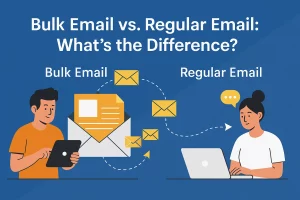Personalization has become a cornerstone of successful email marketing campaigns. In a world where consumers are bombarded with messages daily, personalization is the key to standing out, capturing your audience’s attention, and driving engagement and conversions. In this blog post, we will delve into the importance of personalization in email marketing and provide strategies for tailoring emails to individual recipients.
The Importance of Personalization:
- Higher Open Rates: Personalized subject lines and content make recipients more likely to open and engage with your emails. When a recipient sees their name or personalized content, it feels more relevant to them.
- Improved Click-Through Rates: Emails that are tailored to a recipient’s preferences, past behavior, or demographics are more likely to lead to clicks. This is because the content aligns better with what the recipient is interested in.
- Enhanced Customer Relationships: Personalization shows that you understand and care about your subscribers. It can help build trust and nurture stronger relationships with your audience.
- Increased Conversions: When your emails resonate with recipients on a personal level, they are more likely to take the desired actions, whether it’s making a purchase, signing up for a webinar, or downloading an ebook.

Strategies for Personalization:
- Segmentation: Divide your email list into segments based on various criteria like demographics, purchase history, behavior, or engagement level. This allows you to send highly targeted content to each group.
- Dynamic Content: Use dynamic content blocks within your emails to change the content based on the recipient’s data. For example, you can show different products to different customers based on their previous purchases.
- Personalized Subject Lines: Include the recipient’s name in the subject line or use other personalized elements to grab their attention.
- Behavior-Based Recommendations: Recommend products or content based on the recipient’s past behavior. For example, if they viewed certain products on your website, suggest similar items in your email.
- Location-Based Personalization: Tailor content or offers based on the recipient’s location. This can be particularly useful for businesses with physical stores.
- Lifecycle Email Marketing: Send emails that are relevant to where a recipient is in their customer journey. For new subscribers, offer welcome emails and onboarding content, while for loyal customers, send exclusive offers and rewards.
- Feedback and Surveys: Collect feedback from your subscribers through surveys and use that data to personalize future emails. For instance, if a customer expresses a preference for certain types of content, deliver more of that content to them.
- Timing Personalization: Send emails at times that align with the recipient’s behavior. If they typically open your emails at a certain time, schedule future emails accordingly.
- A/B Testing: Continuously test and optimize your personalized email campaigns. A/B testing helps you discover which personalization strategies work best for your audience.
Conclusion: Personalization is no longer a nice-to-have in email marketing; it’s a necessity. The power of personalization lies in its ability to make your subscribers feel valued and understood, ultimately leading to higher engagement, conversions, and customer loyalty. By implementing these personalization strategies, you can create more relevant and effective email marketing campaigns that resonate with your audience on a personal level.




